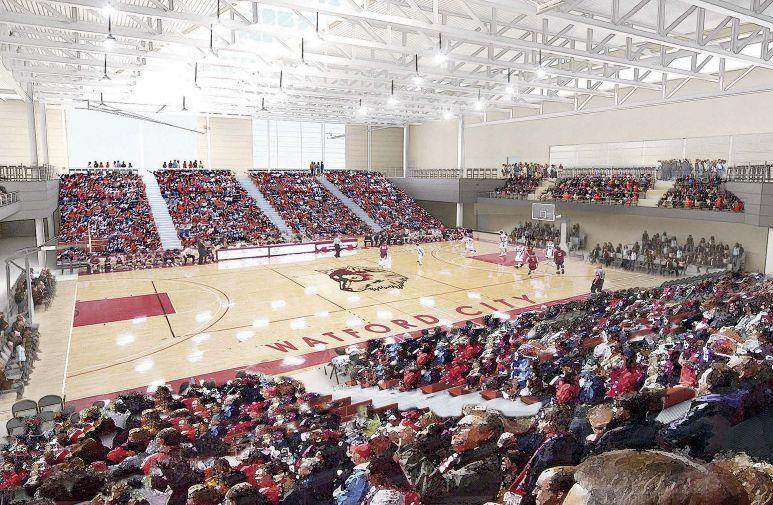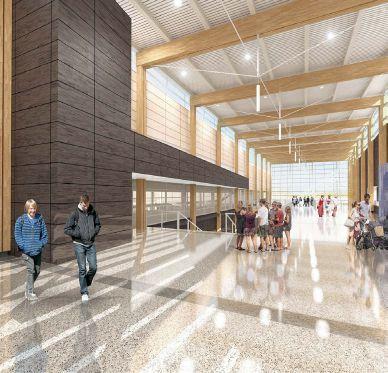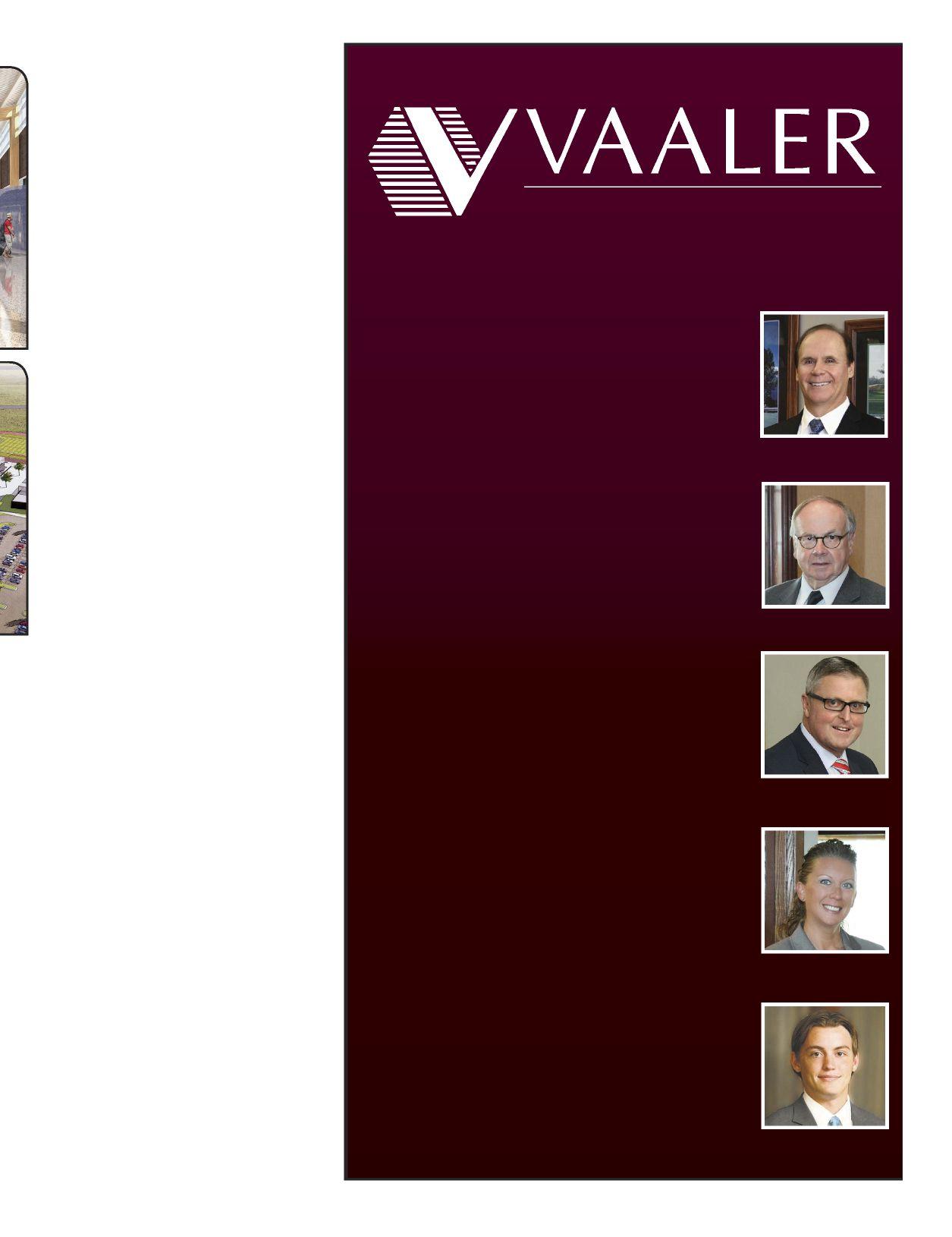
3 minute read
Community Collaboration
When Watford City, N.D., found itself in the middle of the Bakken oil boom with its population skyrocketing, the city’s leaders watched as they outgrew every public building. Led by Mayor Brent Sanford, the city steadily expanded those public buildings to fit the expanded population. In addition, all club sports had outgrown their spaces and each needed to fundraise to build new venues, which is when the city stepped in.
“In 2014, we went around to all the groups who needed their spaces to be increased and brought them all together so everyone wasn’t fundraising individually,” Sanford says. “It was something that people were open and excited about. When you bring all the entities together, it became quite the project.”
BY KAYLA PRASEK
1. Watford City Event Center’s 3,000-seat arena will host basketball and volleyball games, as well as concerts and other events.
2. The event center’s great hall will overlook the new high school’s football field, creating a place to congregate. The great hall is designed to help move people through the facility easily.

3. The exterior of the event center will be constructed using precast concrete, steel and glass.

4. The event center (left) will be connected to McKenzie County School District’s new high school.
IMAGES: JLG ARCHITECTS
That project is the Watford City Event Center, which broke ground in fall 2014 and has a projected completion date of Sept. 1. The $80 million, 242,000-square-foot facility, which was designed by JLG Architects, will be connected to the city’s new high school west of town. It is the centerpiece of a 600-acre development, says Lonnie Laffen, CEO and president of JLG Architects in Grand Forks, N.D. The facility itself sits on 40 acres donated by the Steve Stenehjem family. Kraus-Anderson, headquartered in Minneapolis, and Construction Engineers, headquartered in Grand Forks, are providing construction services.
The facility includes a convention center with banquet facilities for 400 and conference and meeting space for 1,000, a 3,000-seat basketball and volleyball arena with a walking track, a multi-use field house with turf, and a hockey arena with a 1,000-seat ice rink and a practice rink. It will also feature an indoor aquatic center with a six-lane competition lap pool, zero-depth entry pool with water features, mid-depth area with basketball hoop and volleyball net, water slide, lazy river and pool party room. The University of Mary in Bismarck, N.D., will also offer distance education at the facility.

JLG was working on the city’s high school when the city started planning for the event center. “This project was a lot of fun to work on,” Laffen says. “The client trusted us to create a unique complex unlike anything in our three-state region. To work on it was really special, especially considering the town’s size.”
The facility is constructed from precast concrete, glass and metal panel. “Design wise, it’s unique,” Laffen says. “We knew we could create some cool design aspects. There’s a great hall that connects to the high school that overlooks the high school’s new outdoor football field.”
Laffen says it’s also unique to house all of the different facilities under one roof. “The main challenge was figuring out how to organize those big spaces from a people-movement aspect. The great hall makes it easy for people to find their way around.”
Funding for the project comes from a 1.5 percent sales tax and Bank of North Dakota infrastructure lending. Watford City voters approved a tax increase to pay for bonds for the event center and debt service for the city’s new hospital. “Eighty percent of voters voted yes, which tells you where the mindset is of the community,” Sanford says. “It’s a young community with families that need something to do.”

In addition to community collaboration from the gymnastics, skating and hockey clubs, the school district, park district and city signed a joint powers agreement “so the spirit of the facility lives on after those of us that pushed it forward are no longer in these roles,” Sanford says.
“The reality of our economy is we have more people here than ever before,” Sanford says. “From the beginning of the oil boom, we talked about how do we make this community one people want to live in. We needed this city to be family friendly and to be a place where the moms and kids want to move. We made a concerted effort in being a family-friendly community, which is why this is a broader building than a YMCA. I think it’ll be very well received.” PB
Kayla Prasek Staff Writer, Prairie Business 701.780.1187
Interest Rates
Employment
Data provided by David Flynn, chair of the University of North Dakota Department of Economics. Reach him at david.flynn@business.und.edu.


Indicated monthly change in oil production (May vs. Apr)
May-2015
May-2015 May-2016
Monthly
New-well gas production per rig
New-well gas production per rig
Indicated monthly change in gas production (May vs. Apr)
Indicated monthly change in gas production (May vs. Apr)
May-2015 May-2016
May-2015 May-2016
Indicated monthly change in gas production (May vs.
U. S. Energy Information Administration | Drilling Productivity Report










